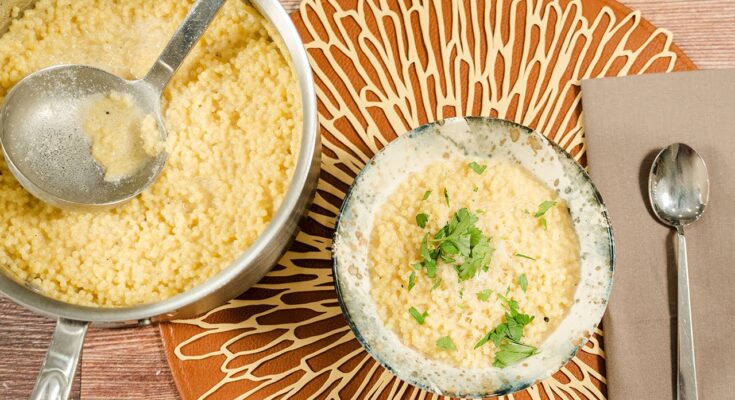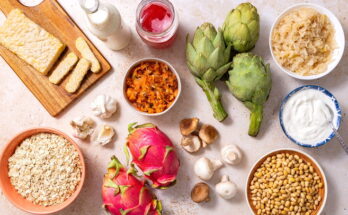Pastina Recipe: Pastina, which means “little pasta” in Italian, refers to tiny pasta shapes often used in comforting, simple dishes. These miniature pasta pieces are a staple in many households, particularly for families with children or those seeking a quick, heartwarming meal.
Why is Pastina So Popular?
Pastina’s popularity stems from its versatility and nostalgic appeal. It’s quick to prepare, easy to customize, and delivers a comforting texture and flavor. This dish is perfect for cozy evenings, a soothing remedy for sickness, or a nostalgic reminder of childhood meals.
Ingredients Needed for Pastina Recipe
Essential Ingredients
To make a classic pastina dish, you’ll need:
- Pastina pasta (½ cup per serving)
- Water or broth (for boiling)
- Salt (a pinch for seasoning)
- Butter (1-2 tablespoons for creaminess)
- Grated cheese (Parmesan or Pecorino are traditional favorites)
Optional Add-Ons for Extra Flavor
If you want to jazz up your pastina, consider adding:
- A dash of garlic powder or black pepper
- Chopped fresh herbs like parsley or basil
- A splash of cream or milk for extra richness
- A sprinkle of red chili flakes for some heat
Tools You’ll Need to Make Pastina
Basic Kitchen Tools
Here’s what you’ll need:
- A medium-sized saucepan
- A wooden spoon or spatula
- A colander for draining (optional)
- A grater for cheese
Tips for Efficient Preparation
- Use a saucepan that’s not too large; this helps the pasta cook evenly.
- Prep all your ingredients beforehand, including grating the cheese and measuring the butter, to ensure a smooth cooking process.
Step-by-Step Instructions for Cooking Pastina
Step 1: Preparing the Ingredients
Start by gathering and measuring all your ingredients. If you’re using broth, heat it slightly before adding it to the saucepan for better absorption. Grate the cheese and set it aside.
Step 2: Boiling the Pastina
- Bring 2 cups of water or broth to a gentle boil in your saucepan.
- Add a pinch of salt for flavor.
- Stir in the pastina and reduce the heat to medium-low.
- Cook for 4-6 minutes, stirring occasionally, until the pasta is tender and has absorbed most of the liquid.
Step 3: Adding Cheese and Butter
- Once the pastina is cooked, lower the heat.
- Stir in butter and mix until melted and fully incorporated.
- Add grated cheese gradually, mixing to achieve a creamy consistency.
Step 4: Mixing and Serving
- Taste the pastina and adjust the seasoning with more salt or pepper if needed.
- Serve immediately while it’s hot and creamy. Garnish with fresh herbs or an extra sprinkle of cheese.
Variations of Pastina Recipes
Classic Cheesy Pastina
This version sticks to the basics: buttery, cheesy goodness. Perfect for a quick snack or side dish.
Pastina with Broth for a Soothing Meal
Cooking pastina in chicken or vegetable broth creates a light, nourishing meal, ideal when you’re under the weather.
Creamy Pastina with Milk
Add a splash of milk or cream to your cooked pastina for an extra velvety texture that feels luxurious.
Serving Suggestions for Pastina
How to Serve for Kids
Pastina is a favorite among children due to its soft texture and mild flavor. For kids, serve it with a touch of butter and cheese for a simple yet delicious meal. If you’re feeling creative, mold the pastina into fun shapes or use cookie cutters to create playful presentations.
Pairing Pastina for Adults
Adults can enjoy a more sophisticated version of pastina. Pair it with grilled vegetables, a fresh green salad, or even a side of garlic bread. For an extra twist, add sautéed mushrooms, caramelized onions, or crumbled bacon to elevate the dish.
Nutritional Value of Pastina
Calories and Macros
A standard serving of pastina (prepared with butter and cheese) typically contains around 300-400 calories, depending on portion size and add-ins. It provides:
- Carbohydrates for energy
- Fats from butter and cheese, adding creaminess and flavor
- Protein, especially if prepared with cheese or broth
Health Benefits
- Comfort Food: Its soft texture and warm preparation make it soothing for the digestive system.
- Customizable Nutrition: By adding vegetables, lean proteins, or using whole-grain pastina, you can boost its nutritional profile.
- Kid-Friendly: Easy to digest and nutrient-rich, it’s an ideal option for picky eaters or toddlers.
Tips for Making the Perfect Pastina
Avoiding Overcooking
Pastina cooks quickly, so keep an eye on it to prevent it from becoming mushy. Stir often and remove it from heat as soon as it reaches your desired consistency.
Choosing the Best Ingredients
- Opt for high-quality pasta for the best texture and flavor.
- Freshly grated cheese works wonders compared to pre-packaged varieties.
- Use homemade or low-sodium broth to control the flavor and salt content.
Storing and Reheating Pastina
Proper Storage Methods
If you have leftovers, allow the pastina to cool completely before storing. Place it in an airtight container and refrigerate for up to 3 days.
Best Way to Reheat Without Losing Flavor
To reheat pastina, place it in a saucepan with a splash of water, milk, or broth to restore its creamy consistency. Stir constantly over low heat until warmed through. Avoid microwaving, as it can make the pasta gummy.
Common Mistakes to Avoid
Overcooking the Pasta
Since pastina is so small, it cooks faster than regular pasta. Overcooking can result in a mushy texture. Stick to the recommended cooking time and taste-test frequently.
Adding Too Much or Too Little Liquid
Getting the right liquid ratio is crucial. Too much liquid can leave the dish soupy, while too little can make it dry. Adjust as you go to achieve the perfect consistency.
FAQs About Pastina Recipe
What is Pastina?
Pastina is a type of Italian pasta made of very small pieces, often resembling tiny stars or grains. It’s commonly used in soups or as a comfort food, especially for children.
How do I cook Pastina?
To cook pastina, boil it in salted water or broth until tender, usually about 3–5 minutes. Drain and mix with your choice of butter, cheese, or sauces for a simple and delicious meal.
What are some variations of Pastina?
Popular variations include adding grated Parmesan cheese, a whisked egg for a creamy texture, or mixing it with tomato sauce for a flavorful twist.
Is Pastina healthy?
Yes, pastina can be part of a balanced diet. Pair it with vegetables, lean protein, or healthy fats for a nutritious meal.
Can I make gluten-free Pastina?
Absolutely! Look for gluten-free pastina made from alternative grains like rice or corn, available in most grocery stores.
What’s the best way to store cooked Pastina?
Store cooked pastina in an airtight container in the refrigerator for up to 3 days. Reheat with a splash of water or broth to regain its soft texture.
Why is Pastina called “Italian comfort food”?
Pastina is often associated with childhood memories and simple, soothing meals in Italian households, making it a beloved comfort food.
Conclusion
Pastina is more than just a meal—it’s a comforting experience. Its quick preparation, simple ingredients, and versatility make it a go-to dish for all ages. Whether you’re reminiscing about childhood meals or trying it for the first time, pastina is guaranteed to warm your heart and satisfy your hunger.



